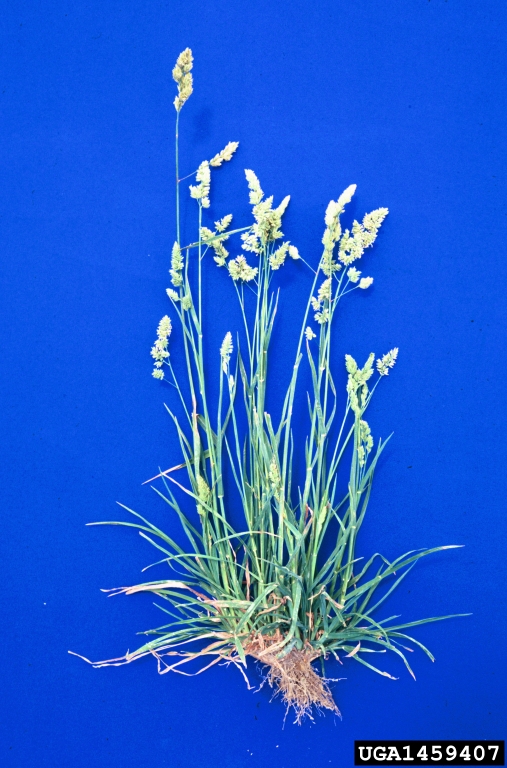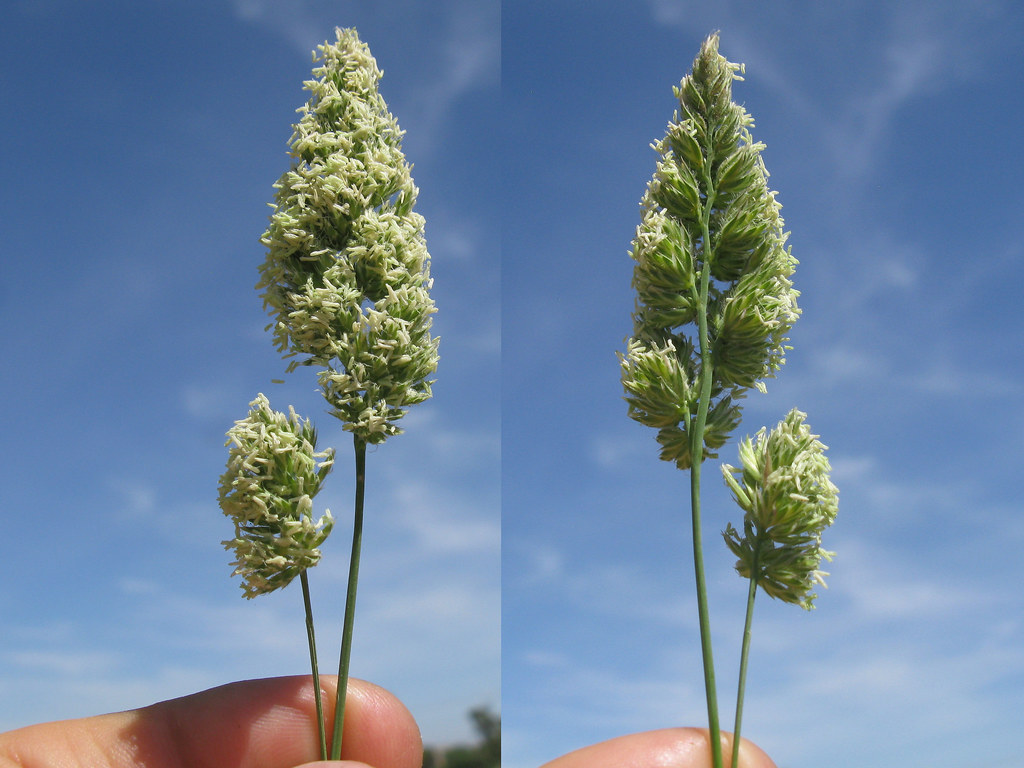Orchardgrass

Orchardgrass
(Dactylis glomerata)
Priority: - Established / Strategic Control
Tags: Terrestrial
Identification and Reproduction
Identification:
- Orchardgrass is a bunchgrass that grows in clumps but is not rhizomatous.
- It can grow up to one metre tall.
- It has hollow, light green stems.
- Leaf blades are flat and can reach 50 cm in length.
- Inflorescences are distinctly one sided, a tufted spikelete and are yellow. Blooms occur between May through August.
Reproduction:
Is a prolific seed producer.
Habitat & Ecology
- It prefers cool, moist conditions, and starts growing early in the spring.
- Orchardgrass is winter-hardy and drought-tolerant.
- It can grow in different soil types but does not like saline soils or flooded areas.
- It normally invades grassy areas such as pastures, meadows and even residential turfgrass.
Impacts
Ecological:
- It outcompetes and suppresses native vegetation.
Management
Refrain from purchasing and planting seed mixtures/blends that carry orchardgrass.
Mechanical/Manual Control:
- If occuring in small patches it is easy to dig and shovel it out. It is recommended to refill and replant the area so another invasion does not occur.
- Mowing may be effective when done prior to flowering. Seed area after mowing.
- If there is a large area where no native species are present, ploughing the site will help suppress orchardgrass.
Resources
E-flora BC is a good resource to help identify orchardgrass.
For more tips on how to manage orchardgrass check out the Garry Oak Ecosystems Recovery Team's Best Practices for Orchardgrass here.
Header photo (Harry Rose).




